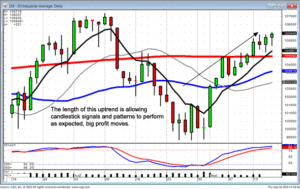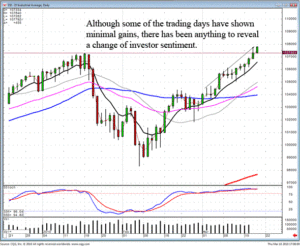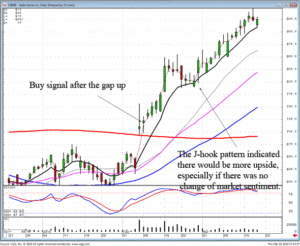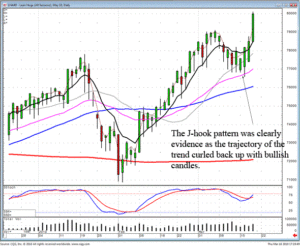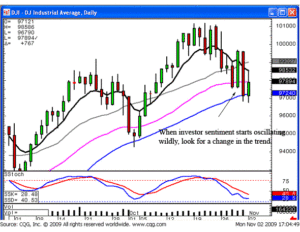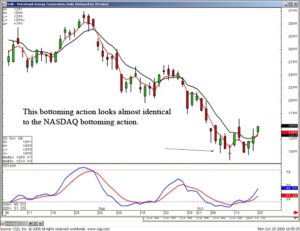A falling tide lowers all ships, or in the case of the stock market, all stocks. But, do all stocks deserve to take a beating in a bad market? Picking depressed stocks in today volatile market can lead to stock trading and stock investing profits. Fundamental analysis and technical analysis both come into play when picking depressed stocks. Everyone wants to buy low and sell high but some stocks deserve to fall in price and will not recover. Picking stocks simply based upon a low price can be a recipe for failure. The point of picking depressed stocks to trade or invest in is that depressed stocks may well go up in price. The key to profits in picking depressed stocks is first to pick the right stocks and second to trade intelligently with tools such as Candlestick charting techniques.
Traders use technical analysis tools such as Candlestick charts in order to read market sentiment as guide to anticipating stock price changes. Those with a primary interest in buy and hold investing can also use Candlestick analysis in order to profitably anticipate which stocks will fall in price and which will rise. The longer the investment horizon of a trader or investor, typically, the more important is fundamental versus technical analysis. Nevertheless long term investing can start off with substantial profits simply buy accurately picking the bottom of a price curve with the help of Candlestick stock charts.
A day trader can improve his luck in picking depressed stocks to trade by taking a look at the same fundamentals that long term investors follow. A stock with a strong margin of safety is likely to bounce back more quickly from a market driven fall in price. In addition such a stock is more likely to survive stock market crashes when fellow companies might go bankrupt or be the subjects of acquisitions. Intrinsic stock value is a stock forward looking earnings as compared to AAA bonds. So long as an economic downturn or other reason for a market collapse does not affect a stock intrinsic value it is a good bet to recover. Picking depressed stocks with both a margin of safety and continued intrinsic stock value gives a trader a potentially very profitable set of stocks to trade.
By carefully picking depressed stocks to trade the trader improves his likelihood of trading successfully. Once he has chosen stocks to trade, however, the real work starts. With market volatility such as we see today market trends can turn into market reversal in a heartbeat. Knowing the fundamentals of a stock may be useful but being able to use tools such as Candlestick pattern formations is critical to following and anticipating stock prices. Smart traders keep an eye on the fundamentals when picking depressed stocks in a chaotic market but they devote their most serious attention to how stock price movement plays out in Candlestick analysis charts and to the successful application of Candlestick trading tactics.
Market Direction
The graphics Incorporated into candlestick signals and patterns provide an immense amount of information that make for logical assessments in market direction. For example, this morning the powerful open probably moved a lot of investors out of their short positions. However, the assessment of the other indicators in conjunction with candlestick signals would have provided the insight to not cover short positions immediately. This information becomes a lot more clear when using the simple attributes of candlestick analysis.
Those simple attributes can also be applied to the Forex trading and commodity trading. Whether working off a 1 min. chart or a daily chart, being able to identify what is occurring in investor sentiment helps produce profitable trades. The day trader can take huge profits out of the markets using a 1 min. and a five-minute candlestick chart combination. The swing trader can trade very comfortably and profitably using a 10 min. chart, and hourly chart, and the daily chart.
Member Chat Session tonight at 8 PM ET.
Good Investing,
The Candlestick Forum Team
Website special reflects current newsletter. If you are reading an archived newsletter you will be directed to Current Website Special

